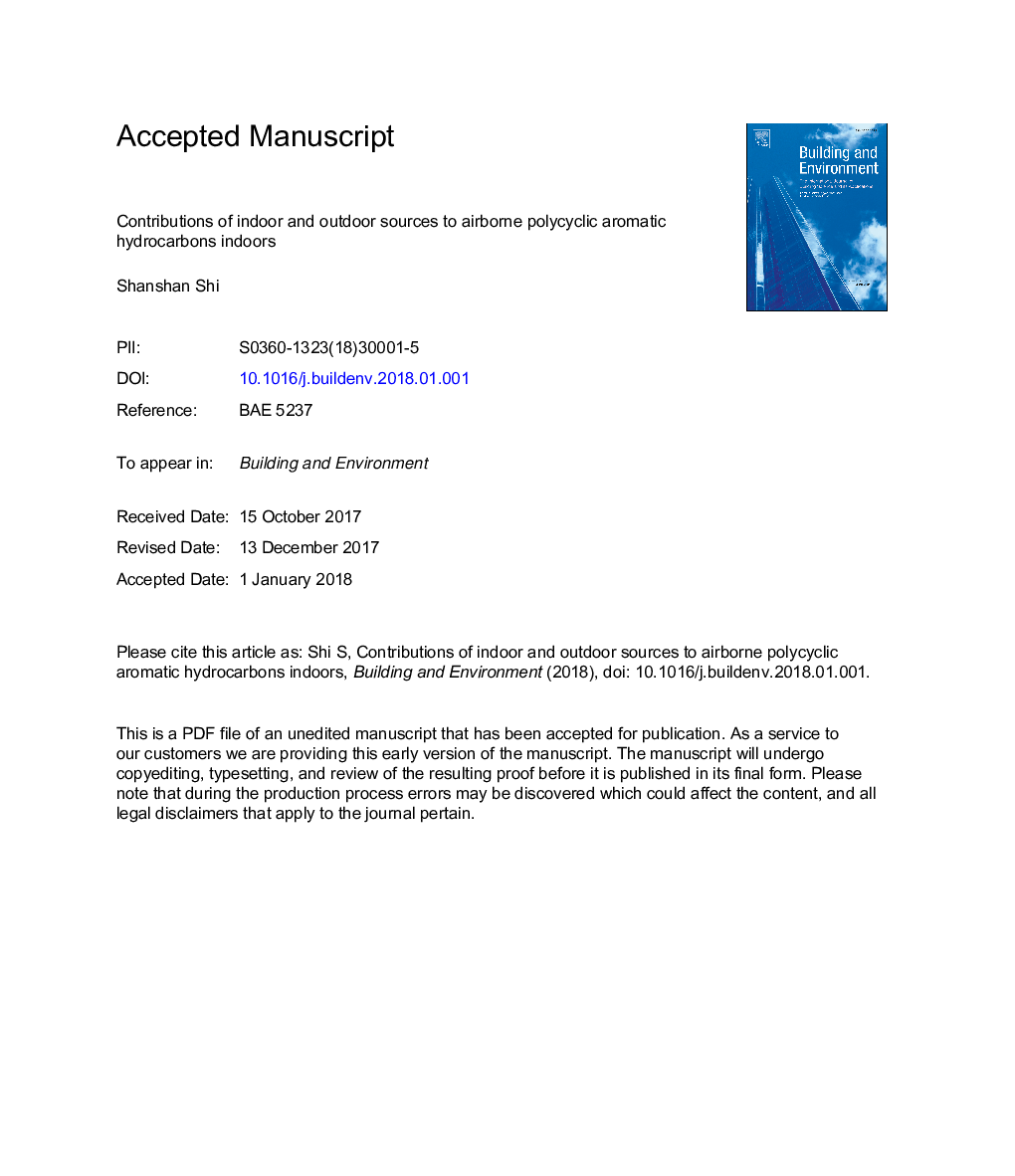| Article ID | Journal | Published Year | Pages | File Type |
|---|---|---|---|---|
| 6698040 | Building and Environment | 2018 | 31 Pages |
Abstract
Exposure to airborne polycyclic aromatic hydrocarbons (PAHs) leads to adverse health outcomes of human beings. Both indoor and outdoor sources contribute to airborne PAHs concentration indoors. In this study, a theoretical model considering the kinetic partition process between gas- and particle-phases PAHs was developed to analyze contributions of indoor and outdoor sources to indoor airborne PAHs. Seasonal contributions of indoor and outdoor sources to indoor pyrene (Pyr) and benzo[a]pyrene (BaP) were estimated in a typical Beijing residence as a model application for the closed-window, open-window and normal ventilation scenarios. For Pyr, the seasonal contribution of the indoor source to indoor concentration is 50.6%, 69.0%, 70.6% and 51.2% in spring, summer, autumn and winter. For BaP, the seasonal contribution of the indoor source to indoor concentration is 27.7%, 39.7%, 34.8% and 17.1% from spring to winter. The modeled results are in good agreement with the implications derived from the previously measured I/O ratios in other studies. Sensitivity analysis was conducted for indoor and outdoor source strengths and air exchange rates. It turned out that the contribution of the indoor source to indoor Pyr and BaP substantially increases with the increase of the indoor source strength and decreases with the increases of the air exchange rate. The model can be simply utilized to quantitatively predict the contributions of indoor and outdoor sources, which has directive significance in making the appropriate controlling measures of indoor airborne PAHs.
Related Topics
Physical Sciences and Engineering
Energy
Renewable Energy, Sustainability and the Environment
Authors
Shanshan Shi,
